Exercises For Back Lower Pain
Best Exercises For Lower Back Pain
When it comes to lower back pain, sometimes the last thing you want to do is exercise, however research proves that movement and exercise really is the key to easing lower back pain. I have spent the last 17 years treating people with lower back pain in my physiotherapy clinic and there are certain exercises that are my staple exercises for anyone with lower back pain. There is NEVER an occasion where I don't recommend exercises for lower back pain. If you look at the NICE (national institute for clinical excellence) guidelines on what is best treatment for back pain you will see that exercise is recommended.
When to start the exercises for lower back pain
My advice is to start as soon as possible, the more you don't move the worse the pain will be. I often say to my patients 'movement is medicine'. Even if you just try one of the following exercises and build up to more as you feel more confident/comfortable to do so. Don't fear any movement, our bodies are designed to move. Becoming fearful of movement will only make your back troubles worse. The exercises listed below will not only help to loosen the lower back but the mid and upper back too. I would advise that for long term benefit you will need to include some core strengthening exercises such as Pilates for lower back pain
Best exercises for lower back pain
1. Pelvic tilting
2. Cat/cow stretch
3. Cobra stretch
4. Arm openings
5. Bridging
6. Simple breathing!
Pelvic Tilting
This exercise can be done either laying down on your back or in sitting. If doing laid on your back, bend your knees so your heels are in line with your sit bones, arms relaxed by your side. Imagine there is a marble resting between your pubic bone and your tummy button, try rolling the marble up to your tummy button by flattening your back to the floor, then roll the marble back towards your pubic bone. Repeat 6-8 times.
Cat/Cow Stretch
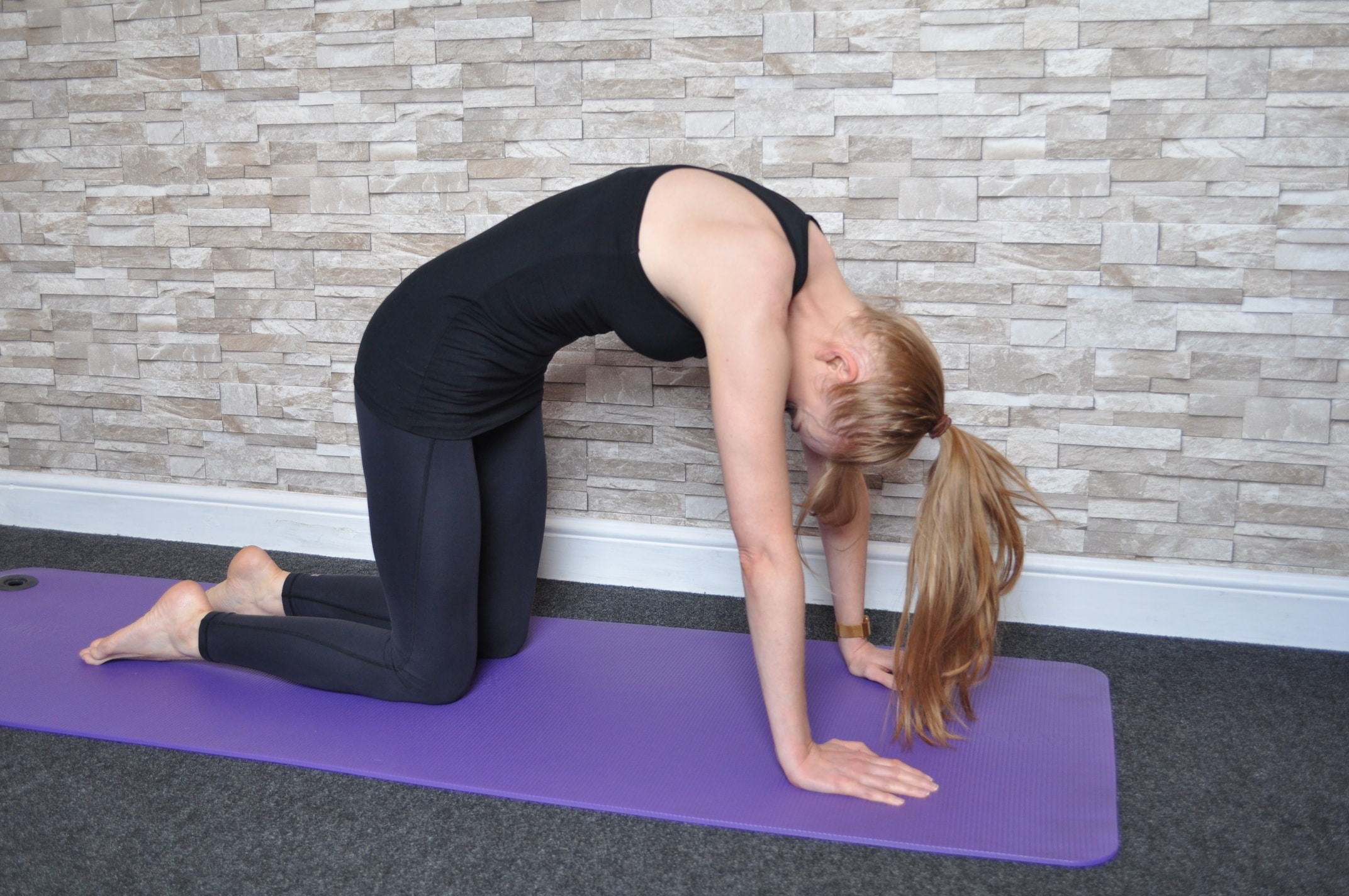
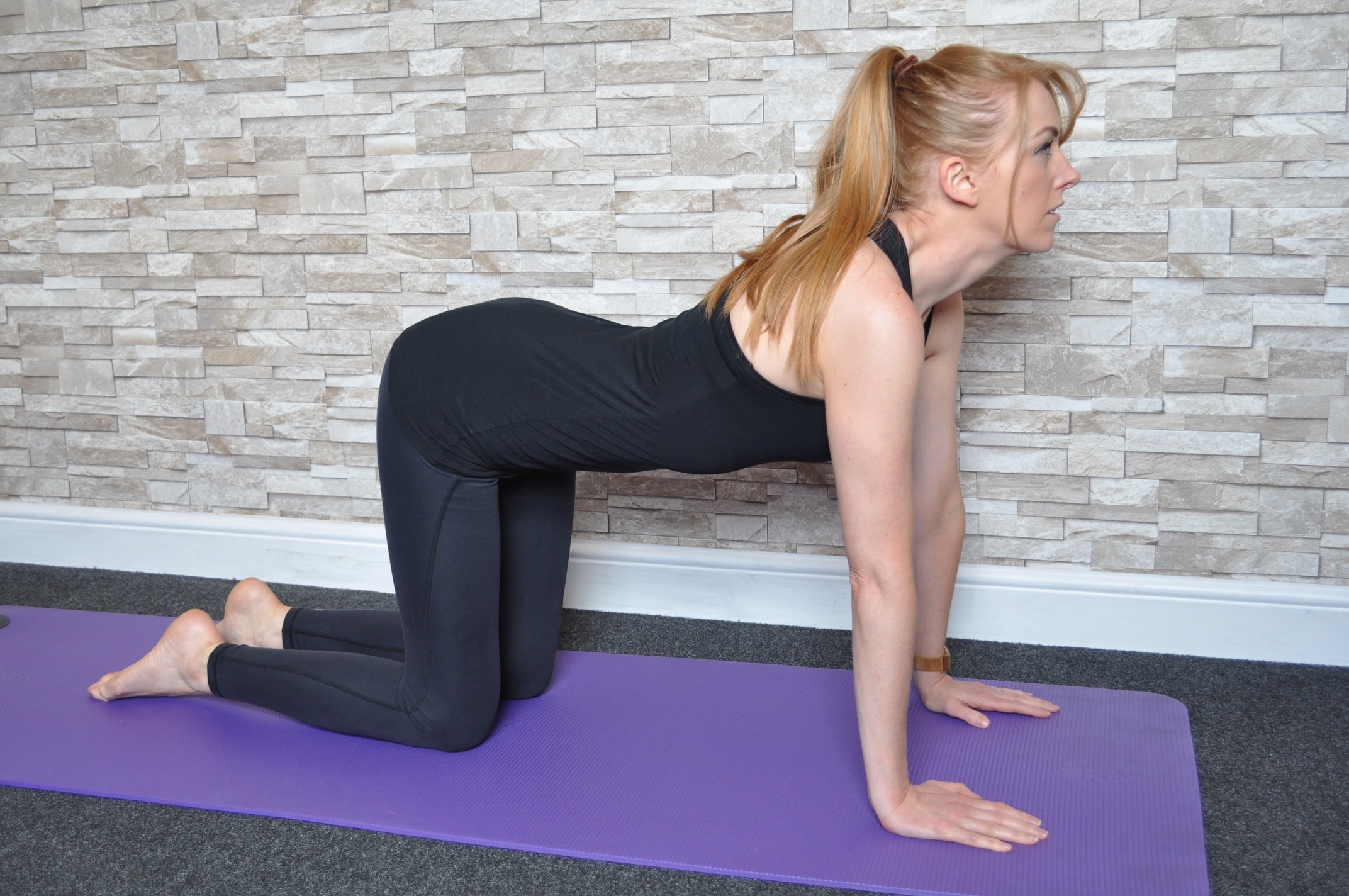
This exercise is performed on your hands and knees. You need to try and think about each segment of your spine moving independently with this exercise (we call this segmental movement). Start by tucking your tailbone underneath you, then visualise the rest of your spine following in a wave until you reach the head, drop your head down between your shoulders and arch your back like a cat. Next lift the tailbone towards the ceiling and allow the rest of the spine to follow like a wave, allowing the tummy to drop towards the floor, lift the head up allowing your spine to sink to the floor. Repeat in each directions 6-8 times.
Cobra stretch
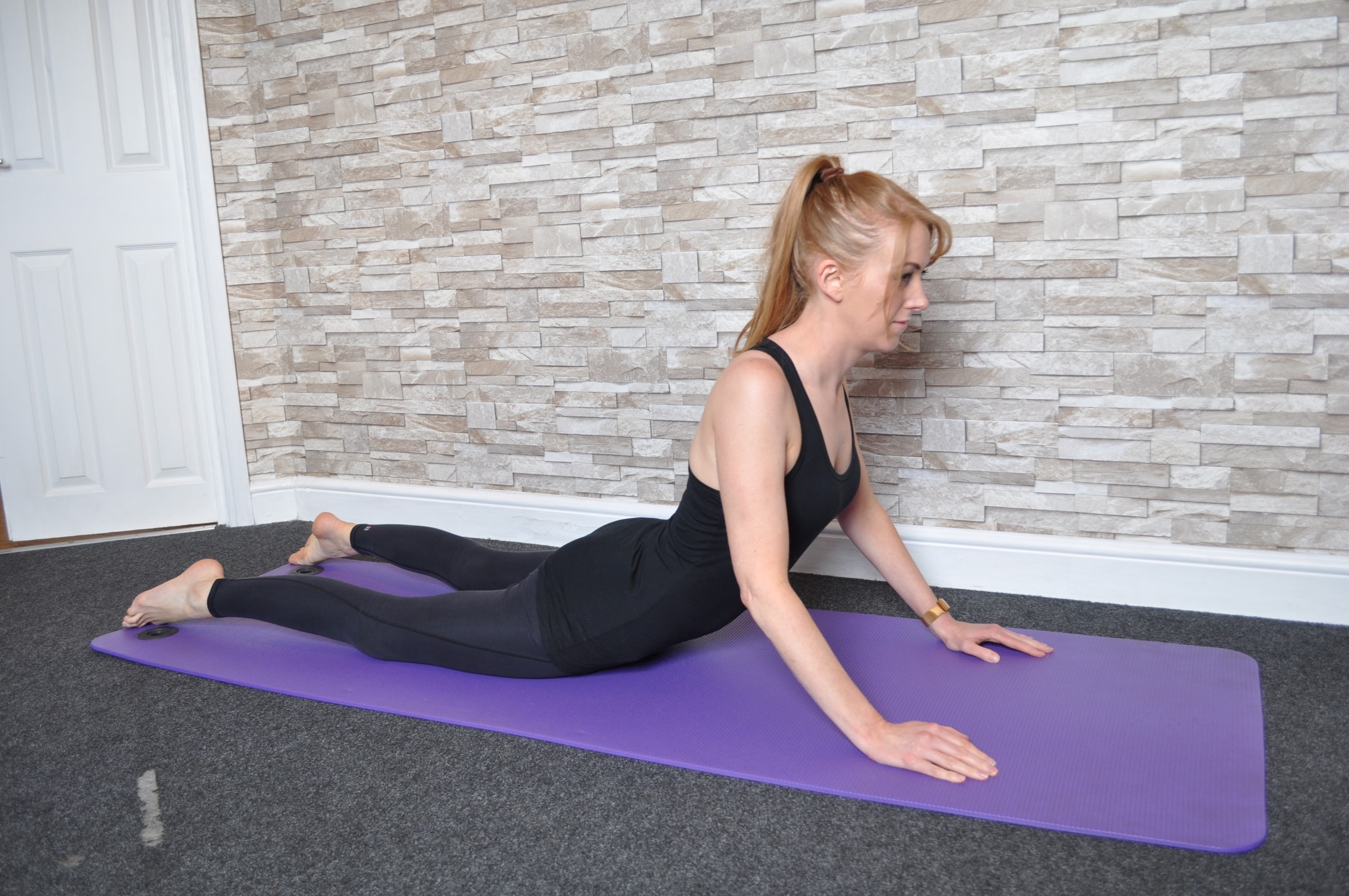
Laying on your tummy with your hands either side of your head, palms down. Slowly push your head and chest away from the floor, imagine your spine peeling away from the mat, lift as high as you feel you can (try to keep your thighs down on the floor). Feel your spine arch. Repeat 6-8 times.
Arm openings
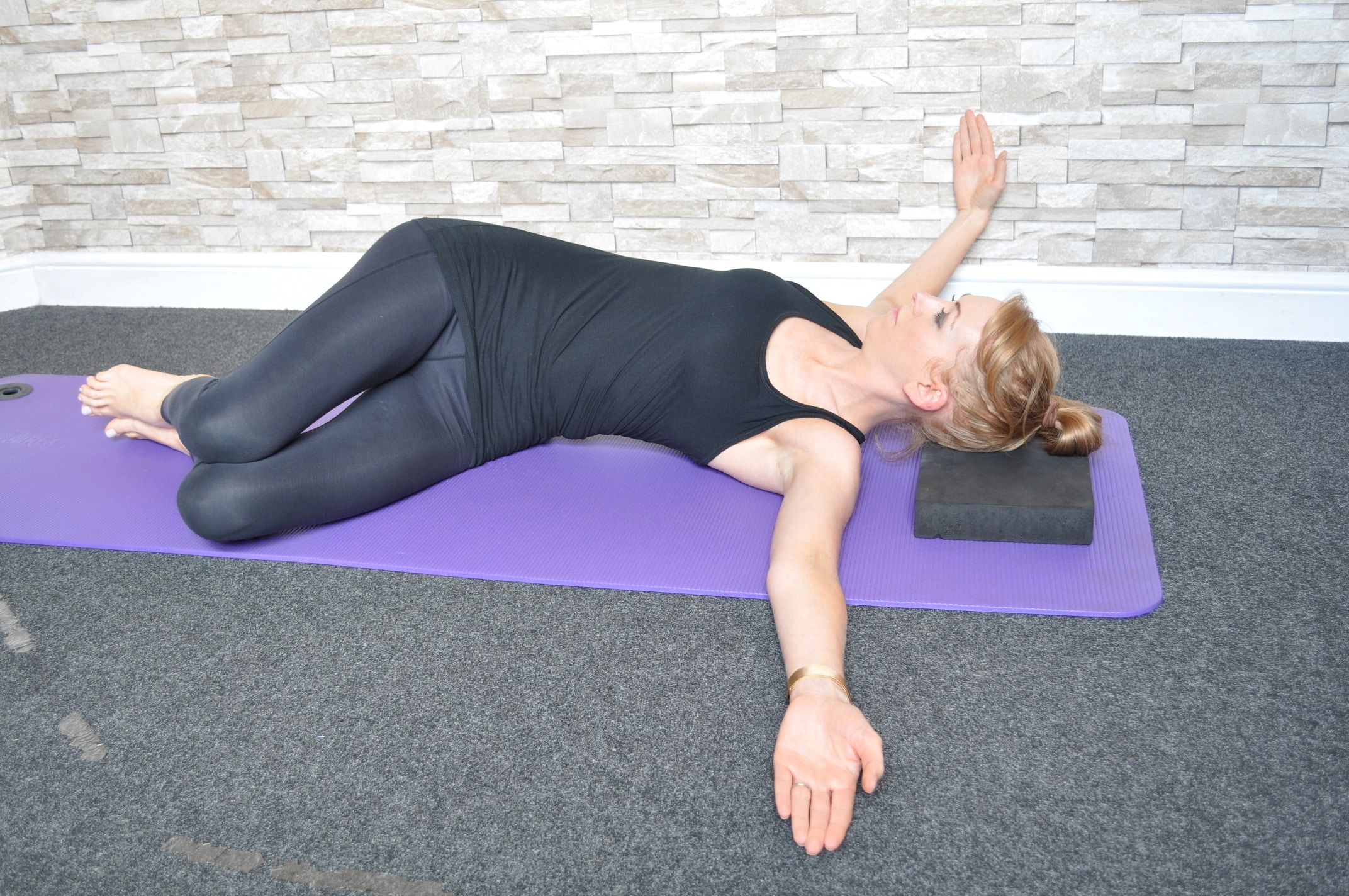
This exercise can be repeated on both sides but you might find one side feels stiffer than the other. Laying on your side with something supporting your head, both arms out stretched, palms together. knees bent forward. Keep your knees glued down together on the floor throughout the exercise. lift the top arm up and over your head to draw a semi circle right the way over the top of you. You will feel you torso twist. You want to aim to get your chest in line with the ceiling. Return the arm back to the start position and repeat 6-8 times.
Bridging
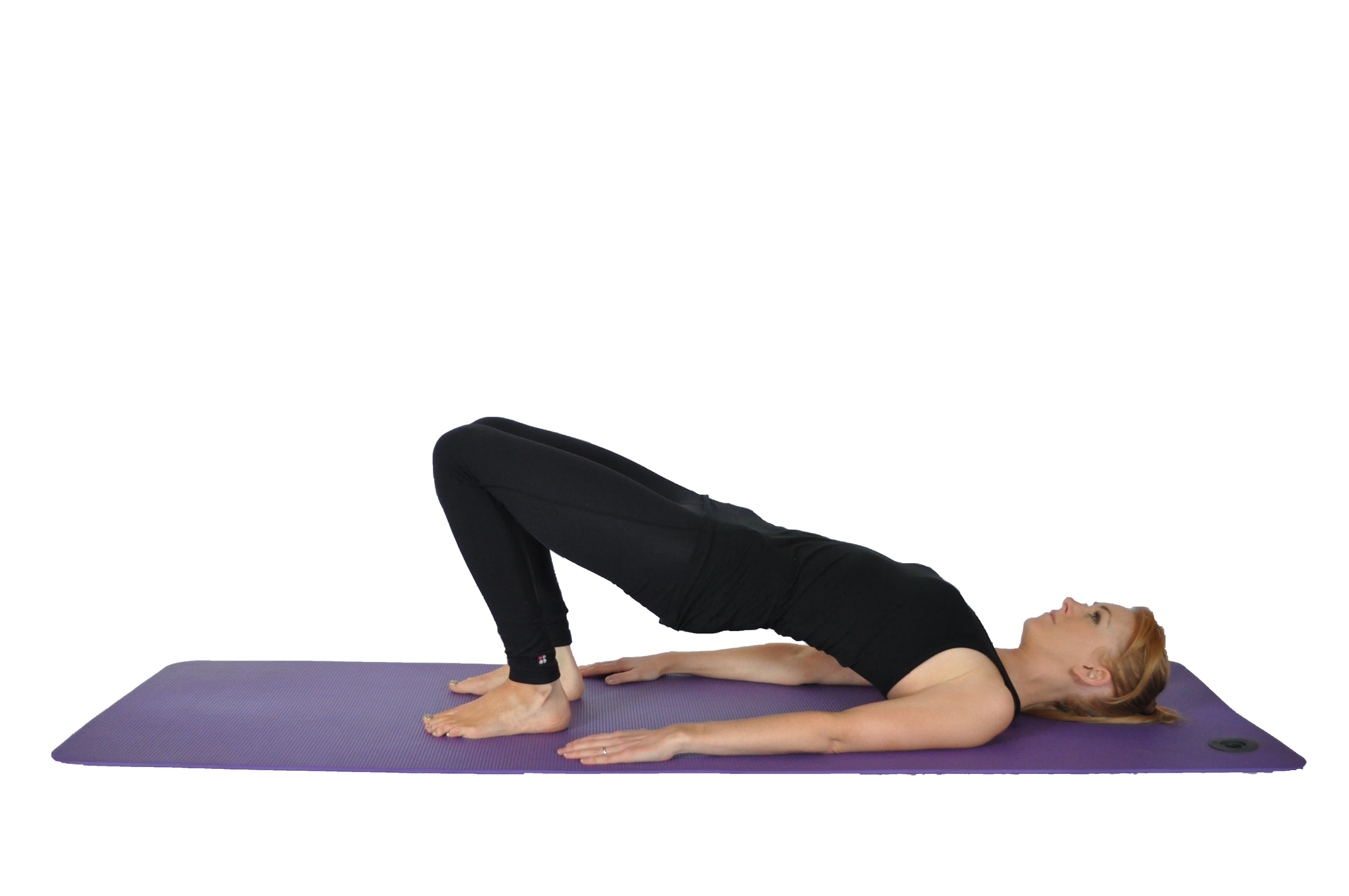
This exercise will not only loosen the spine but also build strength through the posterior chain of muscles that support the back. Starting on your back with your knees bent, arms rested by your side. Flatten your back towards the floor and imagine the tailbone lifting towards the ceiling. Gently peel each vertebrae away from the floor to create segmental movement. Continue lifting until you are weight-bearing through your shoulders (there shouldn't be any pressure on your head). You want to feel the buttock muscles working to keep you lifted. Lower yourself back down by pouring the spine one vertebrae at a time back towards the mat. Imagine the upper back lower first, then the mid back, then the lower back, until you are back on the floor. Repeat 8-10 times.
Simple breathing
You should never underestimate the importance of breathing when it comes to lower back pain. The diaphragm plays a crucial role in supporting the back and should be trained like the other core muscles. Breathing can also create a sense of calm and relaxation, something which is often needed when you are suffering lower back pain. Sit comfortably in a chair with your spine long and tall. It might help to close your eyes. Imagine an elastic band tied around the lower rib cage, inhale deep into the base of the lungs and try to stretch the elastic band out sideways. Repeat 6-8 times.
I would recommend repeating this regime of exercises daily, once a day is enough although you can repeat more than once if you wish. Remember movement in medicine, so next time you feel your lower back pain try these exercises before reaching for the pain relief pills!
During my 17 year career as a physiotherapist I have seen thousands of people with pain in the lower back. The patients that do the best are the patients that follow the exercises carefully. It takes time to recover from back pain so don't expect miracles to happen after the first set of exercises. The routine of exercises above include both strengthening and stretching exercises. It is important to combine both strengthening and stretches but also specific spinal mobilisation exercises. Often people with back pain will alter their movement patterns and create more of a problem by introducing more stiffness to the back. When I analyse peoples spinal movement one of the common things I see is lack of segmental movement between the vertebrae, this is why specific spinal mobilisations exercises are crucial to full recovery, but it is also important that our muscles learn how to control this movement.. You may when first starting, experience some discomfort in your back which so long as that is all it is, is fine and nothing to worry about. I would advise seeking the advice of a physiotherapist if your symptoms don't improve. As I mentioned earlier in this article our bodies are designed to move, it doesn't matter whether your lower back pain is caused by muscles, ligament, discs, facet joint problems or postural, regaining normal movement patterns means that normal function of the joints, disc, muscle can resume.
Combining stretching and strength based exercises in a specific order is the best way to recover from back pain, my workout videos have been carefully designed using my 17 year experience as a physiotherapist. By following my Pilates for lower back pain videos you will see results quickly. We create tailored workouts based on your needs and offer a free trial, start you free trial today here.
Date published: 9 September 2019
